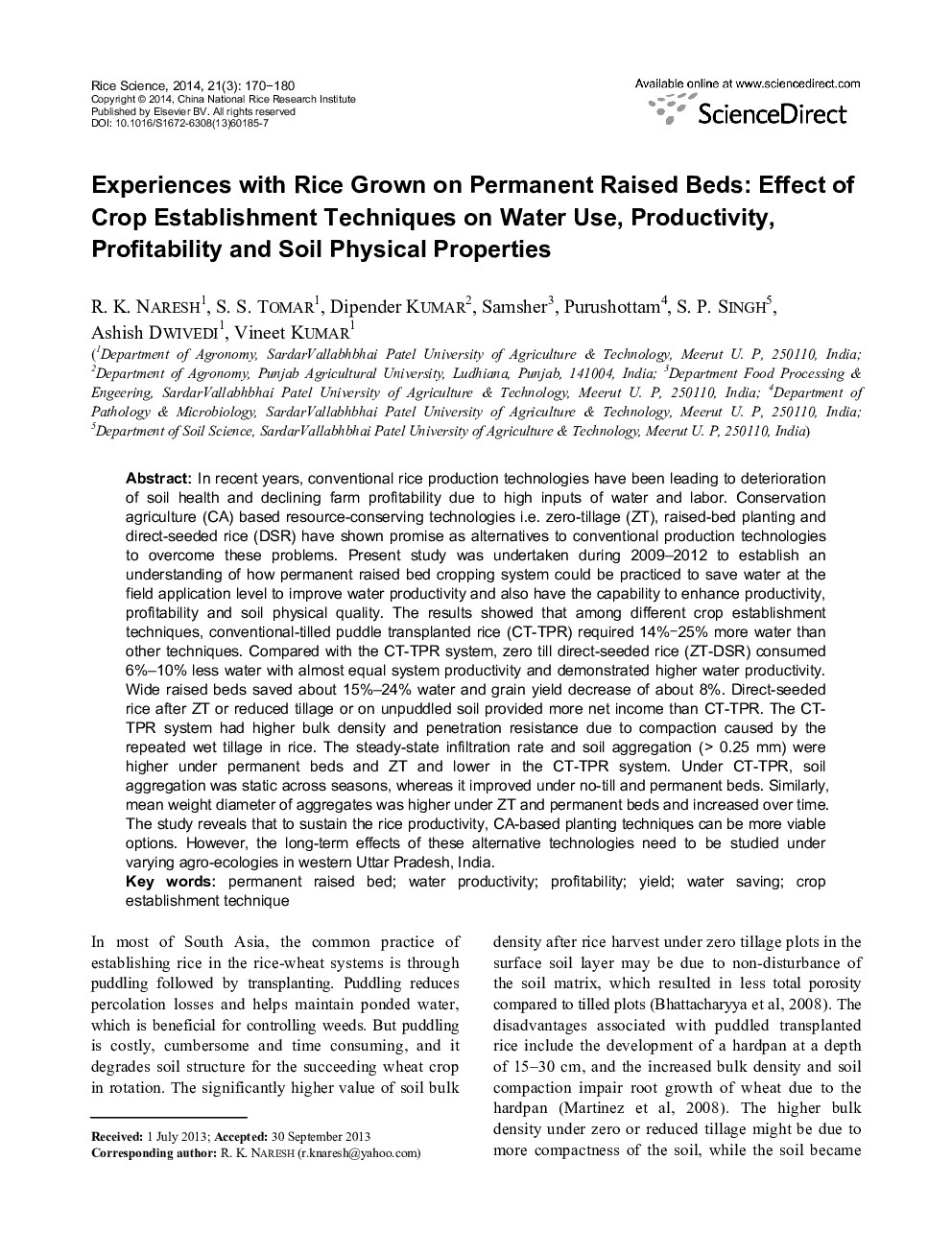| Article ID | Journal | Published Year | Pages | File Type |
|---|---|---|---|---|
| 4501838 | Rice Science | 2014 | 11 Pages |
In recent years, conventional rice production technologies have been leading to deterioration of soil health and declining farm profitability due to high inputs of water and labor. Conservation agriculture (CA) based resource-conserving technologies i.e. zero-tillage (ZT), raised-bed planting and direct-seeded rice (DSR) have shown promise as alternatives to conventional production technologies to overcome these problems. Present study was undertaken during 2009–2012 to establish an understanding of how permanent raised bed cropping system could be practiced to save water at the field application level to improve water productivity and also have the capability to enhance productivity, profitability and soil physical quality. The results showed that among different crop establishment techniques, conventional-tilled puddle transplanted rice (CT-TPR) required 14%?25% more water than other techniques. Compared with the CT-TPR system, zero till direct-seeded rice (ZT-DSR) consumed 6%–10% less water with almost equal system productivity and demonstrated higher water productivity. Wide raised beds saved about 15%–24% water and grain yield decrease of about 8%. Direct-seeded rice after ZT or reduced tillage or on unpuddled soil provided more net income than CT-TPR. The CT-TPR system had higher bulk density and penetration resistance due to compaction caused by the repeated wet tillage in rice. The steady-state infiltration rate and soil aggregation (> 0.25 mm) were higher under permanent beds and ZT and lower in the CT-TPR system. Under CT-TPR, soil aggregation was static across seasons, whereas it improved under no-till and permanent beds. Similarly, mean weight diameter of aggregates was higher under ZT and permanent beds and increased over time. The study reveals that to sustain the rice productivity, CA-based planting techniques can be more viable options. However, the long-term effects of these alternative technologies need to be studied under varying agro-ecologies in western Uttar Pradesh, India.
